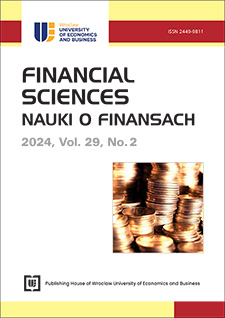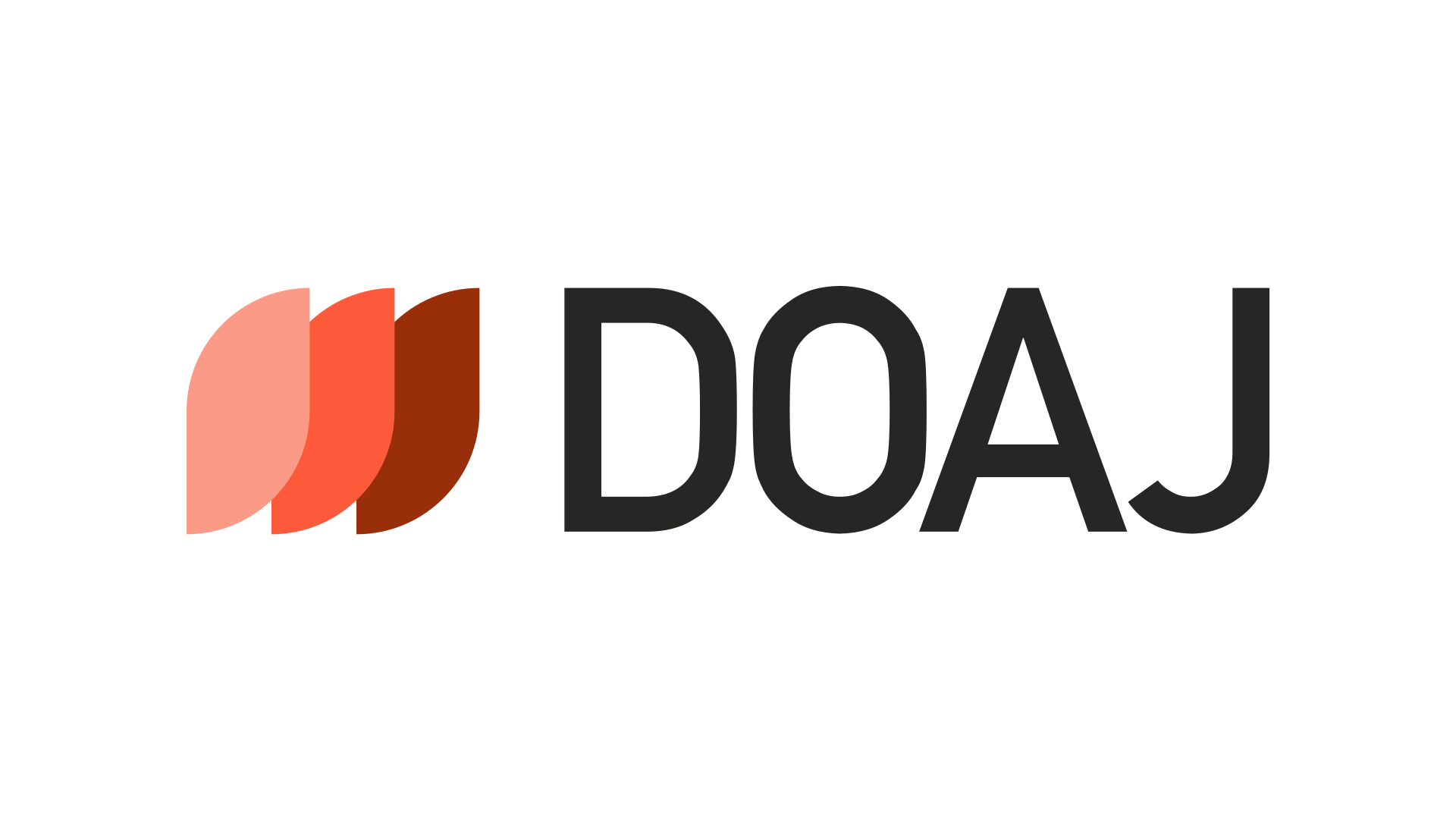Analysis of the Capital Structure of Banks with Islamic Branches in Algeria. The Case Study of Gulf Bank Algeria (AGB)
DOI:
https://doi.org/10.15611/fins.2024.2.04Keywords:
Islamic windows, capital structure, return, risk, Gulf Bank AlgeriaAbstract
Aim: This study aims to analyze the impact of Islamic banking services on the capital structure of Gulf Bank Algeria (AGB), the first traditional bank in Algeria to offer Islamic financial products since 2008.
Methodology: A multiple linear regression model is applied to examine the relationship between Islamic banking windows and key capital structure ratios, including debt-to-equity (DTE) and equity-to-total-assets (ETA). Additionally, the study assesses the influence of profitability metrics (ROA, ROE) and credit risk (CR) on these ratios.
Findings: The findings indicate that Islamic windows have a positive impact on the DTE and ETA ratios of AGB. However, no significant relationship is found between profitability indicators (ROA, ROE) or credit risk (CR) and the bank’s capital structure.
Implications: The study suggests that Islamic financial products can enhance financial inclusion in Algeria while maintaining manageable risk levels. For instance, murabaha can facilitate credit access for lower-income households, while mudaraba can support SME financing. Further diversification of Islamic financial products is recommended to align with international best practices.
Originality/value: This research provides a unique insight into the capital structure of an Algerian bank offering Islamic banking services. Given the limited availability of data in this field, the study contributes valuable empirical evidence to the discourse on Islamic finance and its role in financial inclusion.
Downloads
References
Achi, A. (2023). Efficiency and its Determinants in the Algerian Banks: Network Data Envelopment Analysis and Partial Least Squares Regression. International Journal of Productivity and Performance Management, 72(5), 1479-1508.
Ahmed, F., & Hussainey, K. (2015). Conversion into Islamic Banks: Jurisprudence Economic and AAOIFI Requirements. European Journal of Islamic Finance, 3.
Anitha, A., (2020). A Theoretical Framework on EBIT-EPS Analysis. International Journal of Psychosocial Rehabilitation, 24(8).
Bahadji, K., & Cheikh, S. (2021). Measurement of the Productivity of Algerian Banks: Using DEA-Based Malmquist Productivity Index Approach. Journal of Economic Integration, 9(2), 607-620.
Baker, M., & Wurgler, J. (2002). Market Timing and Capital Structure. Journal of Finance, 57(1), 1-32.
Bensaad, A. (2013). Le Leasing En Algerie: Realite Et Perspectives De Developpement. Revue d'économie et de statistique appliquée, 11(2), 311-323.
Bensaad, A., & Azzazi, S. (2023). The Impact of Monetary Policy Tools in Achieving Monetary Stability in Algeria: Approach by the ARDL model. Financial Market Institutions and Risks, 7(2), 28-45.
Benthami, A., & Cherkaoui, K. (2018). La liquidité des banques : Quel impact sur leur rentabilité? Cas de deux banques marocaines. Revue du Contrôle de la Comptabilité et de l’Audit, 2(2).
Boone, C., & Özcan, S. (2020). Oppositional Logics and the Antecedents of Hybridization: A Country-level Study of the Diffusion of Islamic Banking Windows 1975-2017. Organization Science, 31(4), 797-1051.
Chauhan, S., Verma, A., & Kumar, C. V. (2024). Effect of Capital Structure on the Financial and Social Performance of Indian Microfinance Institutions. FIIB Business Review, 13(2), 243-256.
Farah, I., Amin, C., & Pramudianto, P. (2021). The Effect of Debt To Asset Ratio, Long Term Debt To Equity Ratio and Time Interest Earned Ratio on Profitability. Bina Bangsa International Journal of Business and Management, 1(1), 68–78. https://doi.org/10.46306/bbijbm.v1i1.8
Financial Reports of Gulf Bank Algeria for the Years 2008-2020. https://www.agb.dz/index.php#doc
Hajar, B., & Tawfik, B. T. (2017). Analyse et mesure de la rentabilité bancaire : étude comparative entre une banque publique et une banque privée en Algérie. Revue des politiques economiques, 5(1), 58-73. https://asjp.cerist.dz/en/article/132651
Halawa, J., Nasution, F. N., & Fachrudin, K. A. (2024). Analysis The Effect of Company Size, Profitability, Capital Structure and Risk Profile on Firm Value with Dividend Policy as a Moderating in Banking on the Indonesia Stock Exchange (2013-2022). International Journal of Current Science Research and Review, 7(04), 2230-2244.
Hossain, A. A. (2014). Inflation and Monetary Policy in an Islamic Financial System: Empirical Relationships among Money, Output, and Consumer Prices in Nine Muslim-majority Countries. Journal of Asian Economics, 31.
IFSB. (2015). Core Principles for Islamic Finance Regulation, Banking Segment. Islamic Financial Services Board. Joo, B. A., & Hussanie, I. (2017). Selecting the Right Variable as a Proxy for Profitability – A Propitious Beginning for Researchers. International Refereed Research Journal, 8(4-2).
Khan, S., Bashir, U., & Islam, M. S. (2021). Determinants of Capital Structure of Banks: Evidence from the Kingdom of Saudi Arabia. International Journal of Islamic and Middle Eastern Finance and Management, 14(2), 268-285.
Kyriazopoulos, G., & Hadjimanolis, G. (2011). Dupont Analysis of a Bank Merger and Acquisition Between Laiki Bank from Cyprus and Marfin Investment Group from Greece: Is There an Increase of Profitability of the New Bank? MIBES Conference Proceedings, 157-176.
Le, T. N. L., Nasir, M. A., & Huynh, T. L. D. (2023). Capital Requirements and Banks Performance under Basel-III: A Comparative Analysis of Australian and British banks. The Quarterly Review of Economics and Finance, 87, 146-157.
Mbatchou Ntchabet, A. Y., Bandela Menyeng, C., & Youmto, E. (2020). Les déterminants de la performance financière des banques commerciales au Cameroun : Une étude en panel. Revue Internationale des Sciences de Gestion, 3(3).
Mokhtar, H. S. A. (2007). Technical and Cost Efficiency of Islamic Banking in Malaysia. Review of Islamic Economics, 11(1).
Muhammed, S., Desalegn, G., & Emese, P. (2024). Effect of Capital Structure on the Financial Performance of Ethiopian Commercial Banks. Risks, 12(4), 69.
Ngatno, Apriatni, E. P., & Youlianto, A. (2021). Moderating Effects of Corporate Governance Mechanism on the Relation Between Capital Structure and Firm Performance. Cogent Business & Management, 8(1), 1866822.
Nguyen, A. H., Nguyen, H. T., & Pham H. T. (2020). Applying the CAMEL Model to Assess Performance of Commercial Banks: Empirical Evidence from Vietnam. Banks and Bank Systems, 15(2), 177-186. https://doi.org/10.21511/bbs.15(2).2020.16
OECD. (2014). Debt to Equity Ratio in Financial Corporations. In National Accounts at a Glance. OECD Publishing.
Puspitasari, E., Sudiyatno, B., Aini, N. & Anindiansyah, G. (2021), The Relationship Between Net Interest Margin and Return on Asset: Empirical Study of Conventional Banking in Indonesia. Academic Journal of Interdisciplinary Studies, 10(3), 362. https://doi.org/10.36941/ajis-2021-0090
Puspitasari, E., Sudiyatno, B., Hartoto, W. E., & Widati, L. W. (2021). Net Interest Margin and Return on Assets: A Case Study in Indonesia. The Journal of Asian Finance, Economics and Business, 8(4), 727–734. https://doi.org/10.13106/JAFEB.2021.VOL8.NO4.0727
Ramu, S., & Satyanarayana, V. S. (2019). Financial Performance Analysis of HDFC Using DuPont analysis. Inspira-Journal of Commerce, Economics & Computer Science (JCECS), 5(2), 46-52.
Regulation No. 2020-02 of March 15, 2020 Defining the Operations of Bank Relating to Islamic Finance and the Conditions of their Exercise by Banks and Financial Establishments.
Sahoo, D., & Mishra, P. (2012). Structure, Conduct, and Performance of the Indian Banking Sector. Review of Economic Perspectives, 12(4). 235-264.
Sakunasingha, B., Anekwasinchai, P., & Wiriyawit, V. (2018). Capital Structure Determinants for Local Commercial Banks: Thailand Evidence. Catalyst, 18, 18-29.
Sobhani, F.A., Murtaz, M., & Omar, N. (2016). Critical Analysis of the Role, Challenges, and Shariah Compliance of Islamic Windows by Conventional Banks in Bangladesh. International Journal of Economics and Management, 10(2). 391-407.
Staikouras, C. K., & Wood, G. E. (2004). The Determinants of European Bank Profitability. International Business & Economics Research Journal, 3(6).
Tamara, D., Heraini, N. & Ivan, D. (2022). Determinants of bank capital structure: Evidence from Indonesia. Ultima Accounting, 14(1), 2-17.
Tamil Selven, S. (2020). Types of Transformation for Better Normal Distribution. https://medium.com/data-science/types-oftransformations-for-better-normal-distribution-61c22668d3b9
Toumi, K. (2011). Structure de capital, profitabilité et risques des banques islamiques. Économie et f inance quantitative [q-fin]. Université Montpellier 1France; Université de Sfax-Tunisie.
Umoh, E. (2024). Impact of Capital Structure on the Income Performance of Publicly Rated Traded Deposit Money Banks in Nigeria (2003-2022).
Vasileiou, E. (2017). Value at Risk Historical Approach: Could it Be More Historical and Representative of the Real Financial Risk Environment? Theoretical Economics Letters, 7, 951-974.
Downloads
Published
License
Copyright (c) 2025 Abderrahmane Bensaad, Selamne Benbaibeche, Yamina Bensaad

This work is licensed under a Creative Commons Attribution-ShareAlike 4.0 International License.
Accepted 2025-01-25
Published 2025-01-28








